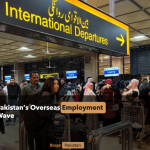In a bold move to streamline bureaucracy and curb fiscal waste, the federal Government Jobs has announced the elimination of 30,968 public sector positions, with plans to scrap an additional 7,724 roles in subsequent phases. This sweeping reform, disclosed during a Senate Standing Committee on Finance session, marks one of the largest workforce reductions in recent history—a decision sparking debate about efficiency, equity, and the future of public service employment.
Breaking Down the Numbers: Who’s Affected?
The job cuts span nearly all tiers of government Jobs, from entry-level roles to senior positions. Here’s a closer look at how the reductions break down:
Lower-Grade Positions Bear the Brunt
- Grade 1: 7,305 posts abolished; 4,253 more slated for elimination.
- Grades 2–16: Thousands of roles across these tiers have been phased out, though exact figures remain undisclosed.
Mid-Level to Senior Roles Also Impacted
- Grade 17: 760 positions cut, with 58 more pending.
- Grade 18: 203 posts abolished; 36 additional roles to be removed.
- Grade 19: 99 Government Jobs eliminated, plus 71 earmarked for future cuts.
- Grade 20: 36 senior roles axed.
- Grades 21 & 22: Two posts terminated in each top-tier category.
This restructuring aims to flatten bureaucratic hierarchies, reduce redundancy, and reallocate resources toward “critical public services,” according to the Cabinet Secretary.
The End of the “Son Quota”: A Controversial Legacy
One of the most debated aspects of the reforms is the abolition of the “son quota”—a decades-old policy that guaranteed government jobs to family members of employees who died in service. Critics long argued the system was prone to nepotism and sidelined merit-based hiring.
Why This Policy Change Matters
- Merit Over Entitlement: The move aligns with global trends favoring competitive recruitment processes.
- Financial Implications: Eliminating the quota reduces long-term pension liabilities and administrative costs.
- Public Reaction: While some laud it as progressive, others argue it removes a safety net for grieving families.
The Establishment Division has directed all ministries to enforce the revised policy immediately, signaling a hard shift toward transparency in public sector hiring.
Economic Implications: Savings vs. Social Costs
The government claims these cuts have already saved Rs. 30 billion, with more savings expected as additional phases roll out. However, economists warn that the human cost of unemployment could offset fiscal gains.
Short-Term Savings, Long-Term Questions
- Budget Relief: The Rs. 30 billion saving could fund infrastructure projects or social programs.
- Unemployment Concerns: Over 31,000 families face sudden income loss, potentially straining welfare systems.
- Sector-Specific Fallout: Education, healthcare, and administrative services may experience staffing gaps.
Global Parallels: Learning from Other Nations
Countries like the UK and Canada have pursued similar austerity measures, often with mixed results. For instance, the UK’s 2010–2015 cuts led to efficiency gains but also sparked criticism over declining public service quality. Pakistan’s challenge will be balancing fiscal discipline with social stability.
Public Reaction: Outrage, Relief, and Uncertainty
The announcement has triggered polarized responses nationwide.
Supporters Praise Fiscal Responsibility
Advocates argue the reforms are overdue, citing:
- Blotted Bureaucracy: Pakistan’s public Government Jobs has long been criticized for overstaffing and inefficiency.
- Taxpayer Savings: Redirecting funds to development projects could stimulate economic growth.
- Modernization: Streamlining roles may improve service delivery through technology integration.
Critics Highlight Risks
Opponents warn of:
- Rising Inequality: Low-grade employees, often from marginalized communities, are disproportionately affected.
- Skill Drain: Talented workers may leave the public sector for private opportunities abroad.
- Social Unrest: Job losses could fuel protests, particularly in regions reliant on government employment.
Behind the Decision: What’s Driving the Reforms?
The government cites multiple factors justifying the cuts:
1. IMF Pressure and Fiscal Discipline
Pakistan’s recent IMF agreements emphasize reducing public expenditure to manage debt. These job cuts align with austerity measures demanded by international lenders.
2. Digital Transformation of Government Jobs
Automation and e-governance tools are reducing the need for manual administrative roles. For example, digitized tax systems require fewer data-entry staff.
3. Post-Pandemic Economic Strategy
The COVID-19 pandemic exposed vulnerabilities in public spending. Officials argue leaner departments can respond more agilely to future crises.
The Road Ahead: Challenges and Opportunities
While the reforms aim to create a more efficient Government Jobs, their success hinges on execution. Key considerations include:
Reskilling Programs for Affected Workers
Investing in vocational training could help displaced employees transition to emerging sectors like renewable energy or IT.
Strengthening Social Safety Nets
Expanding Ehsaas Program subsidies or unemployment benefits may mitigate the humanitarian impact or Jobs.
Transparency in Hiring Practices
Merit-based recruitment must replace the abolished son quota to restore public trust.
Monitoring Service Delivery : Government Jobs
Tracking metrics like healthcare wait times or school enrollment rates will reveal whether cuts harm essential services.
As Pakistan navigates this transformative phase, the world watches closely. Will these cuts pave the way for a leaner, more dynamic public sector—or deepen socio-economic divides? The answer lies in how well the government balances its ledgers with the lives they impact.










